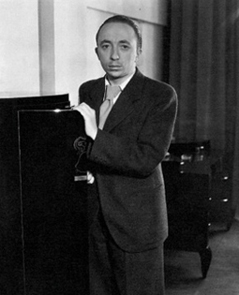Product Description
Andre Arbus (attr.) French Art Deco Straw Marquetry Box c. 1940


ANDRÉ ARBUS (attr.) (1903-1969) France
Straw marquetry box c. 1940
Natural gold and ebony stained straw inlaid in a design of a window pane diamond pattern on the hinged lid, original suede cloth/paper interior, wood frame
For more information see: André Arbus: architecture-décorateur des années 40, Yvonne Brunhammer (Paris: l’Editions NORMA, 1996).
W: 8″ x D: 5 1/2″ x H: 1 1/2″
Andre Arbus (attr.) French Art Deco Straw Marquetry Box c. 1940
DAUM FRÈRES Nancy, France
“Cornflower” vase c. 1897
Blown cobalt blue on a frosted glass ground with heavily wheel carved cornflowers, with an overall martele surface
Signed: Incised Daum Nancy with the Cross of Lorraine France
For more information on Daum Frs. see: Glass: Art Nouveau to Art Deco, Victor Arwas (NY: Abrams, 1987).
H: 4 3/4″
Price: $9,850
PER SAX MØLLER (b. 1950) Denmark
Round sculptural centerpiece with geometrical shapes 2000
Sterling silver
Marks: PER SAX MØLLER, Copenhagen, 925s, Sterling
Exhibited: Danske Sølsmede-nye arbejder (Danish silversmiths-new work), Museet på Koldingshus, 2002.
Diameter: 8 ¼”
Price: $12,500
The silversmith Per Sax Møller was trained in the Danish silver tradition with Jeweler to the Royal Danish Court, A. Michelsen, from 1968-1972. The workshop specialized in style copies and modern silver, which during the 1900’s was designed by architects such as Thorvald Bindesbøll, Kay Fisker, Erik Herløw, Tove and Edvard Kint-Larsen, among many others.
After completing his apprenticeship, he worked at Preben Salomonsen’s workshop in Copenhagen, mainly creating style copies for stores such as Tiffany, Bloomingdale’s and Aspery. Here, the ancient silversmith’s craft he had learned at A. Michelsen, was further honed. During the years 1973-1975, he attended classes at Guldsmedehøjskolen, but he was disappointed in the low standard of teaching and therefore did not graduate.
He found the opportunity for a far richer artistic education as a conscientious objector, stationed at the art museum Louisiana in Humlebæk, outside Copenhagen. He spent more than a year here, surrounded by the works of Henry Moore, Arp, Calder, Laurent and Danish artists such as Astrid Noack, Ejler Bille, Sonja Ferlov Mancoba, Villy Ørskov and many more, which left a deep and profound mark.
In 1976, Per Sax Møller established himself in a workshop alongside goldsmith Jørgen Bindesbøll, in St. Kongensgade in Copenhagen. Over the next couple af years, he also joined the association “Danske Sølvsmede” in exhibitions throughout Scandivavia. He retired from the workshop with Jørgen Bindesbøll in 1980, but continued to create works in rented space. To help earn a living, he drove a city bus and worked for Folketeateret in Copenhagen, creating theatre sets.
Jørgen Bindesbøll moved to Møn in 1984, and Per Sax Møller took over his workshop in St. Kongensgade. Soon thereafter, he established himself in a workshop in Pilestræde, Copenhagen, and then in 1992, he took over silversmith Kay Bojesen’s workshop in Bredgade 47, where he resides today.
In the mid 1990’s Per Sax Møller rejoins “Danske Sølvsmede”, and in 1999 he succeeds silversmith Ib Andersen as president of the association. As president, he revitalizes Danish silver by initiating the exhibition Danish Silver 2000, which takes up most of the space in the museum Koldinghus and becomes one of the largest manifestations of Danish silver. During one summer month, the exhibition was visited by 30,000 guests.
In 2002, Per Sax Møller resigns the presidency of “Danske Sølvsmede” to once again concentrate on his own works. Per Sax Møller has received Danish State Arts Foundation grant in 1979, 1997, 2000 and 2002. His works are represented at Oslo Museum of Art and Design, Danish Museum of Art and Design, at the museum Koldinghus and in private collections in Europe, USA and Canada.
